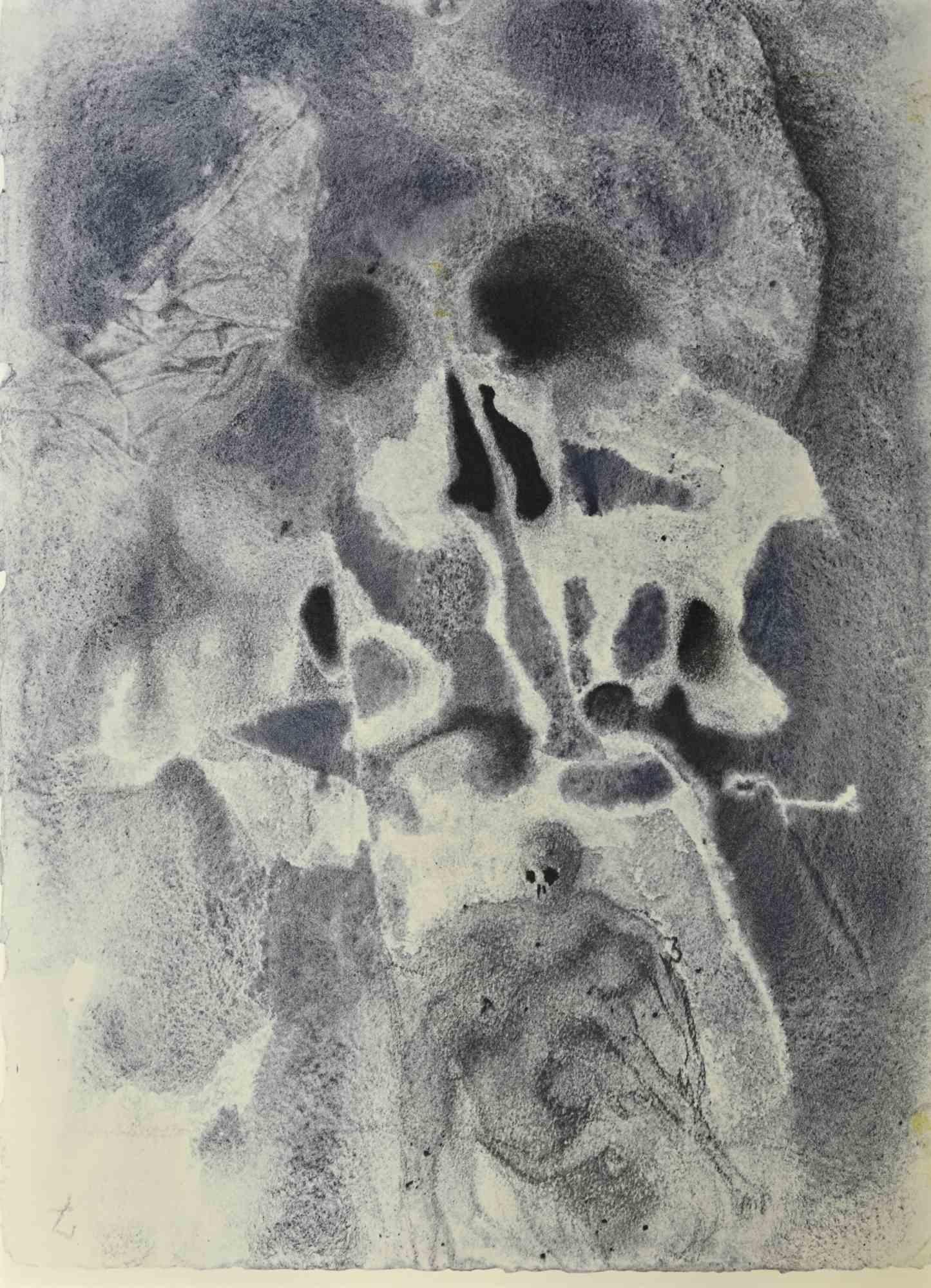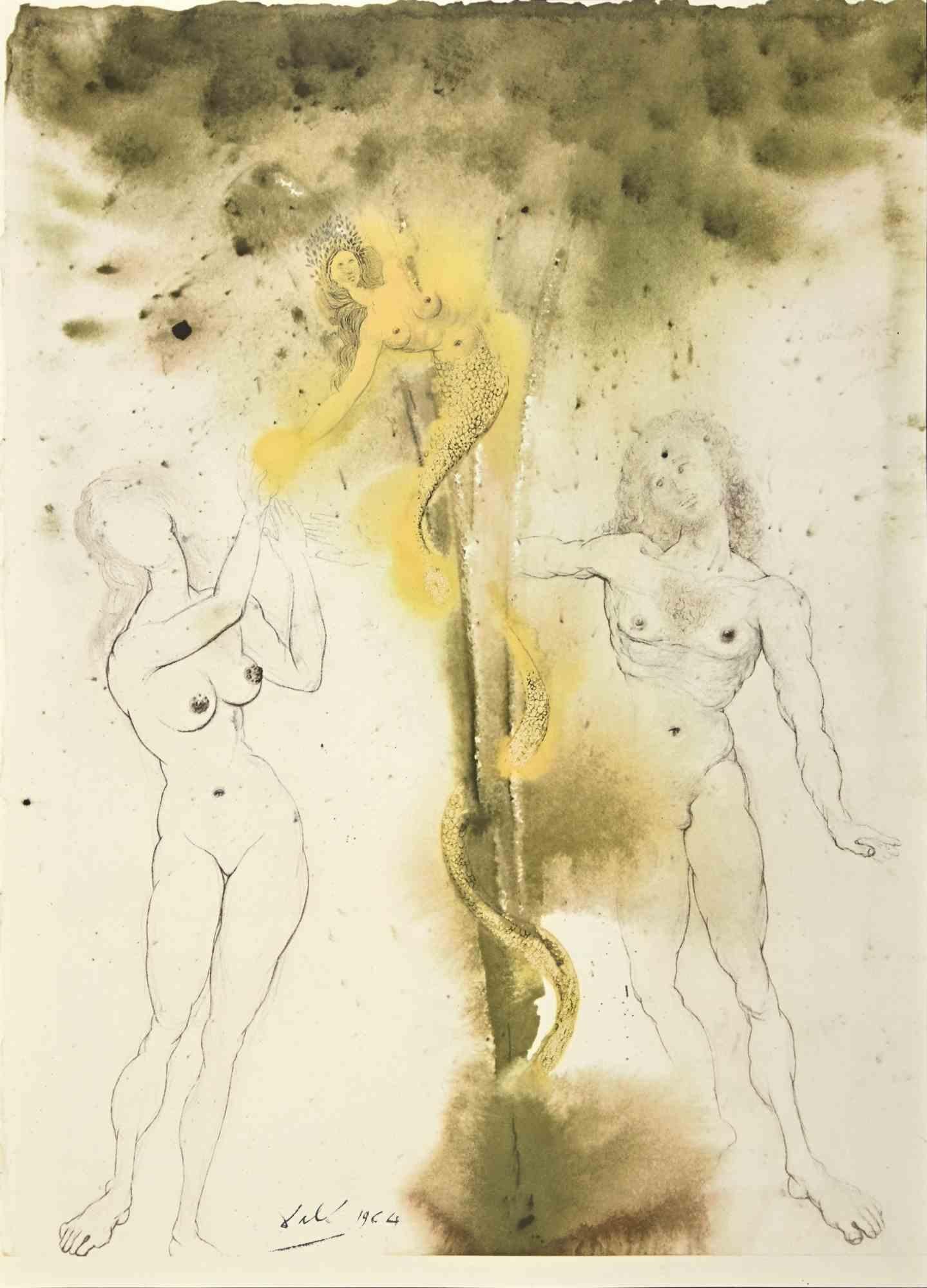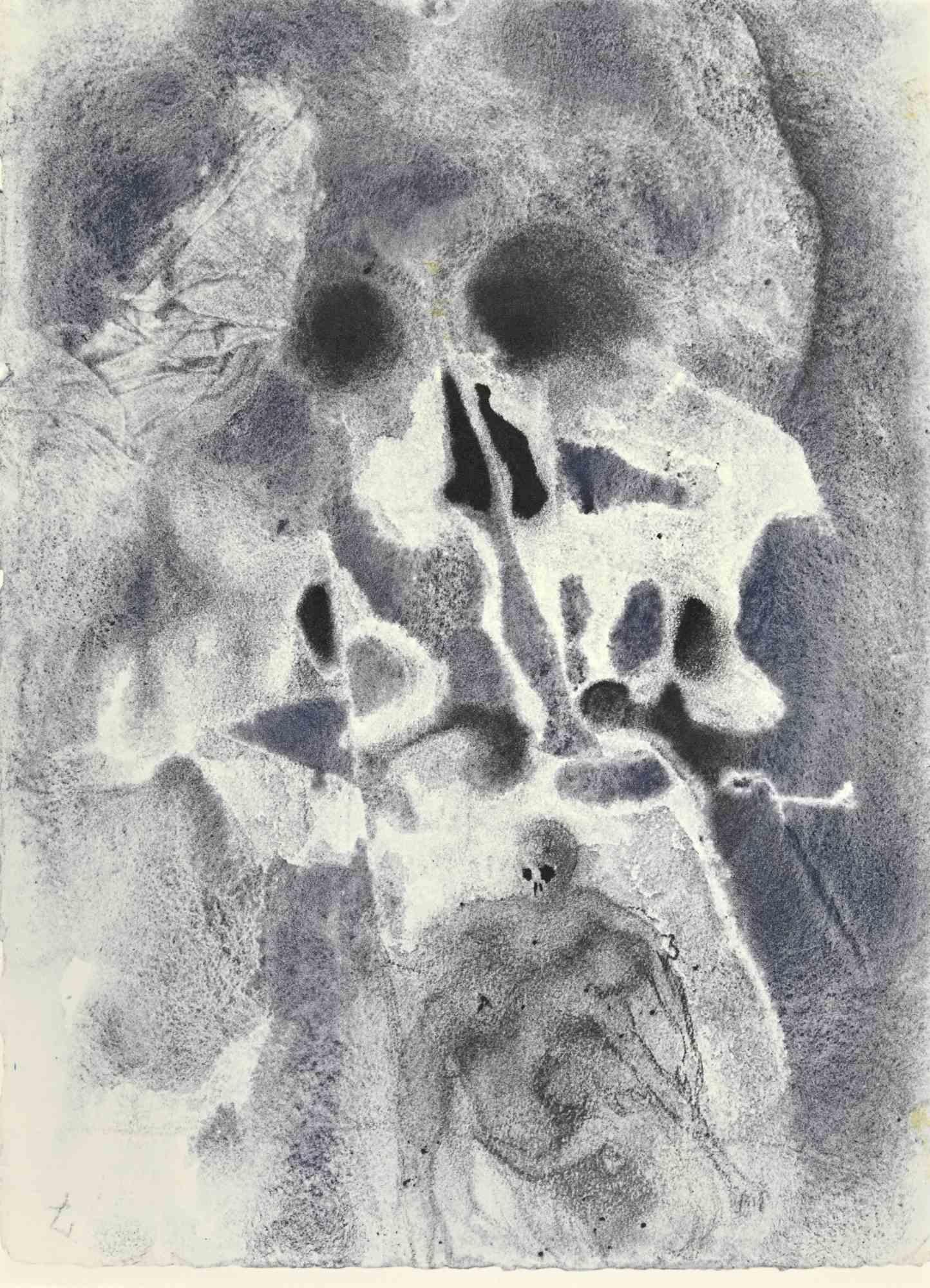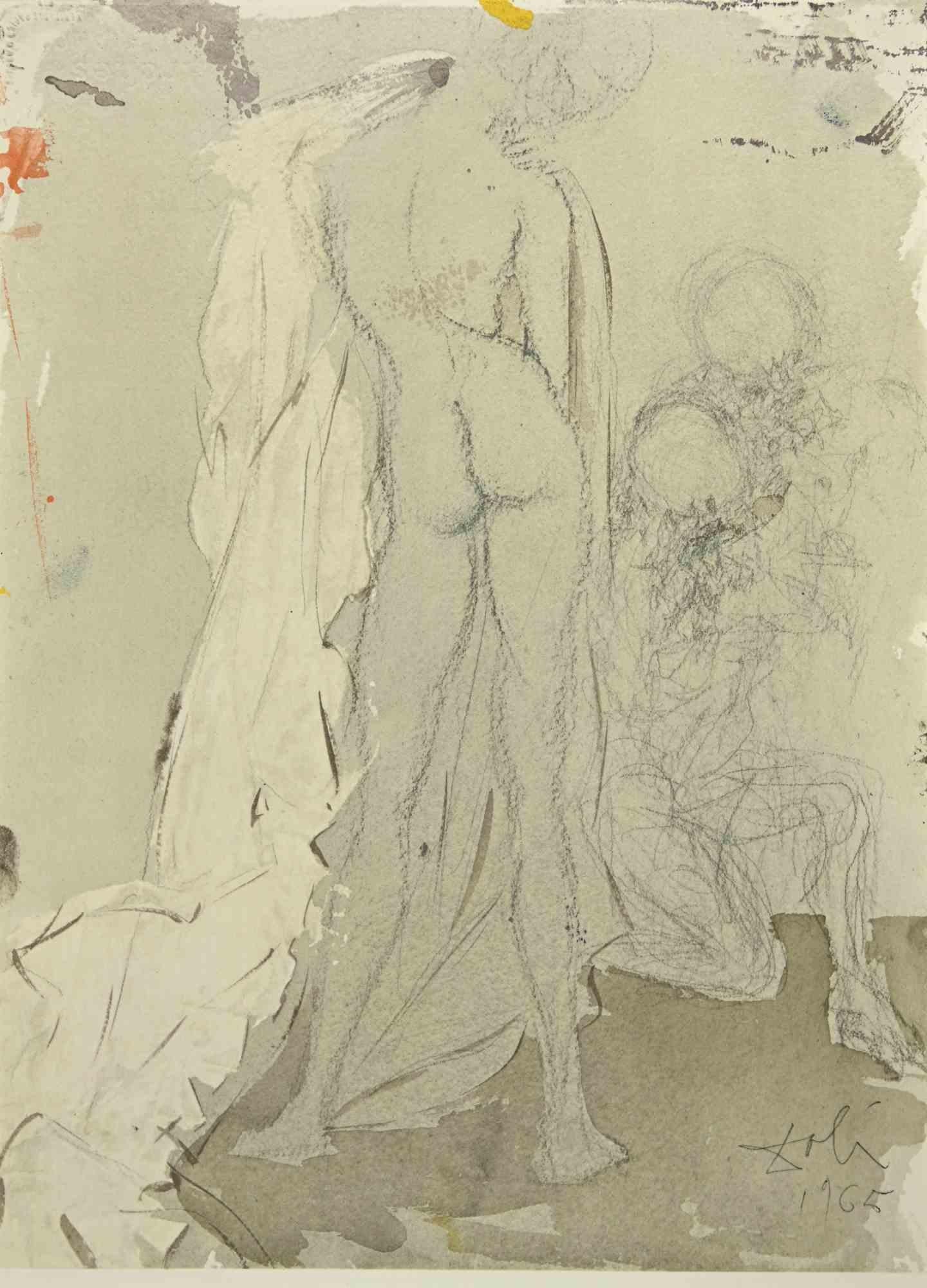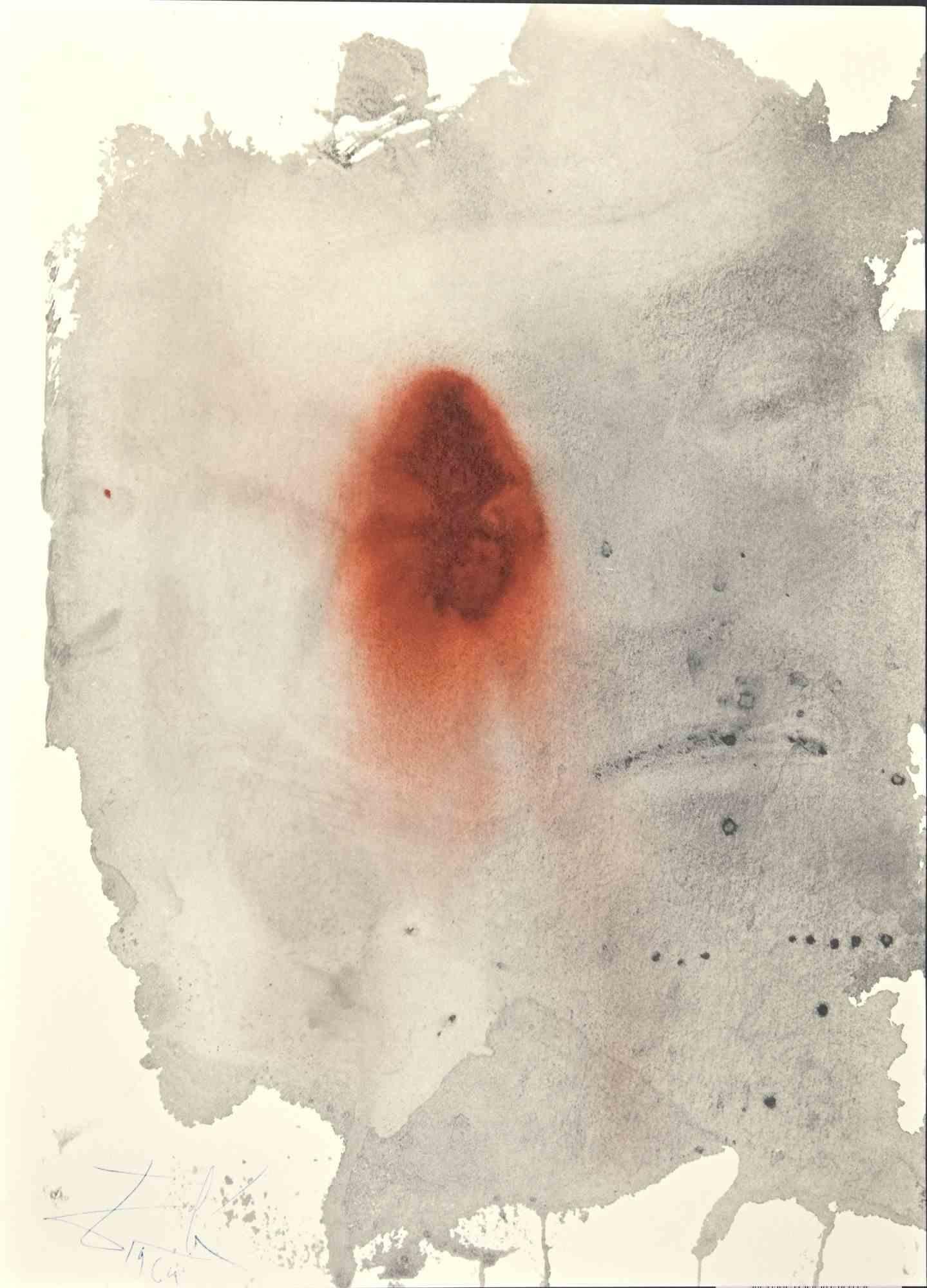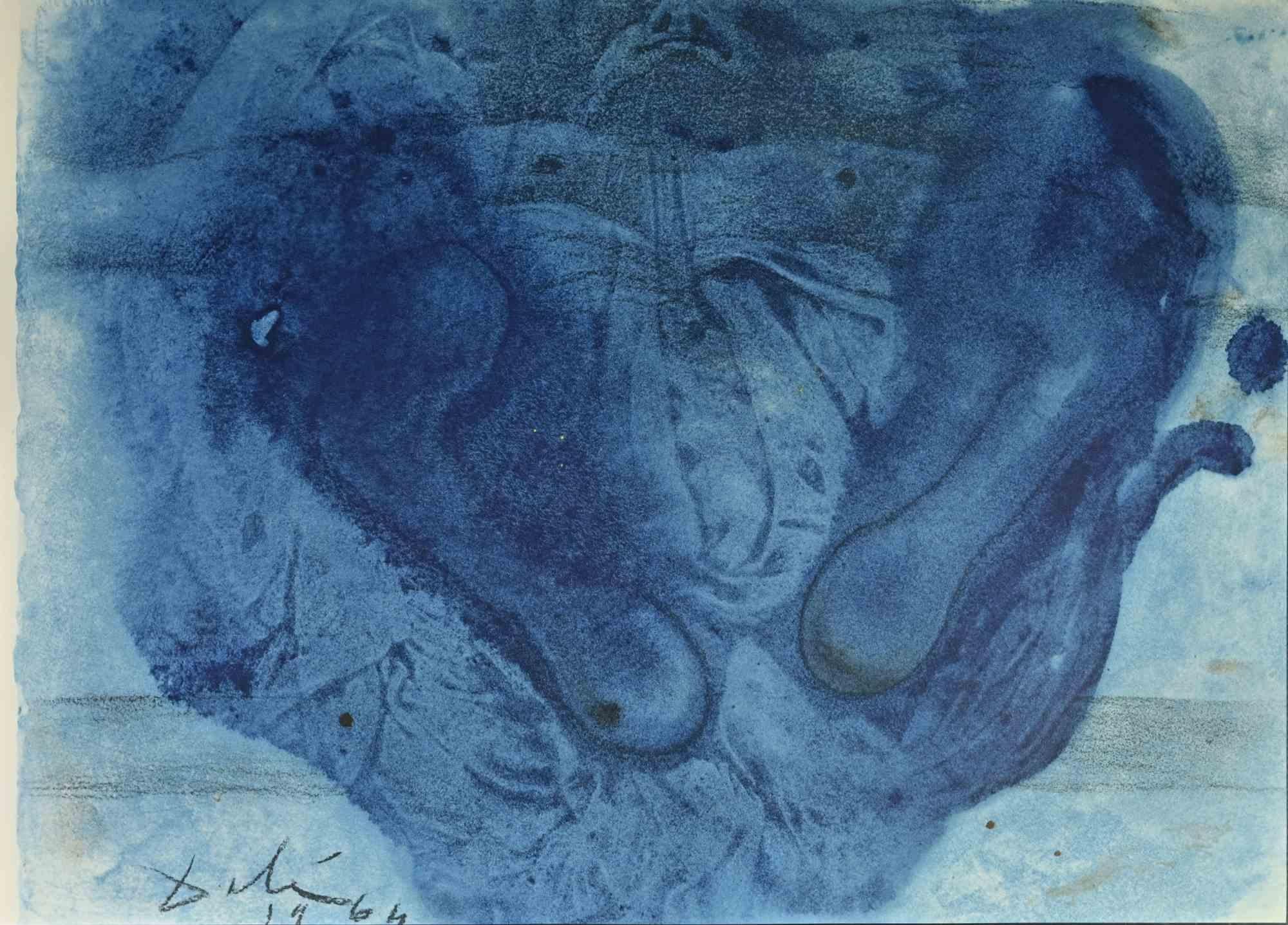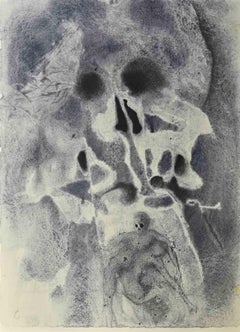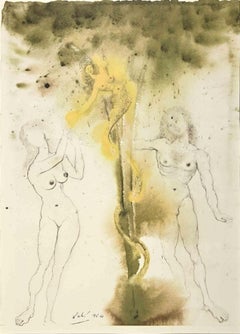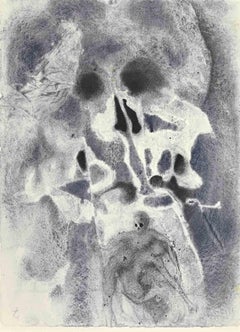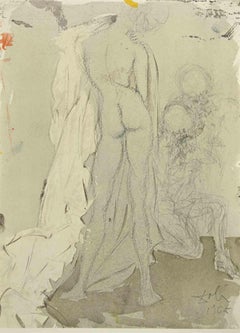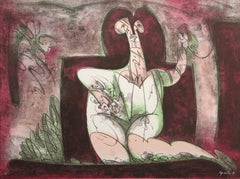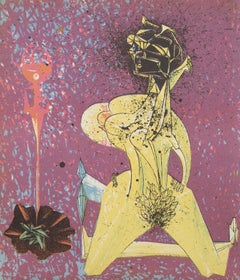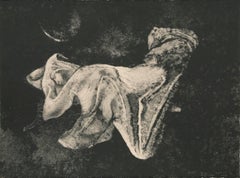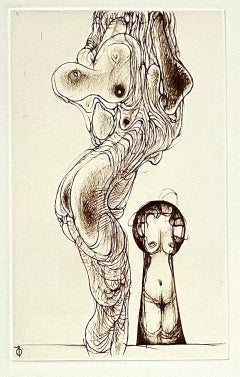Items Similar to Antequam Exires De Vulva ... - Lithograph - 1964
Want more images or videos?
Request additional images or videos from the seller
1 of 8
Antequam Exires De Vulva ... - Lithograph - 19641964
1964
$569.17
£427.75
€480
CA$797.09
A$874.17
CHF 452.76
MX$10,503.79
NOK 5,701.28
SEK 5,350.82
DKK 3,657.77
About the Item
Antequam Exires De Vulva ... is a Color lithograph on heavy rag paper realized in 1964. It is part of Biblia Sacra vulgatæ edition is published by Rizzoli-Mediolani between 1967 and 1969.
Signed and dated on plate on the right margin.
Perfect conditions.
Prov. Private Collection, Southern France.
Salvador Dalí (Figueres, 1904 – Figueres, 1989) is considered one of the most versatile and prolific artists of the XX century and the founding father of Surrealism. In the course of his long career, he successfully experimented with sculpture, fashion, writing, and filmmaking. In his early use of organic morphology, his work bears the stamp of Pablo Picasso and Joan Miró. His work is also characterized by a fascination with classical art, manifested in the realistic style and religious symbolism of his latest works. Dalí was born near Barcelona to a middle class family. He soon demonstrated an interest in art, and, at the age of 18, he attended the Special Painting, Sculpture and Engraving School of San Fernando in Madrid. His eccentricity was notorious, and at first even more famous than his works. When he traveled to Paris, he met Pablo Picasso in his studio and took inspiration from Cubism. In 1928, he collaborated with Buñuel on Un Chien Andalou, which eventually became a manifest of Surrealism. Surrealists considered recruiting Dalí into their circle. In the next years, Dalí’s paintings illustrated his theories about paranoia. He painted bodies, corps, objects that reflected sexuality, anxiety and fear. In the 1950s, Dalí’s paintings focused on religious themes reflecting his interest in the supernatural. During that period, he stayed at the St. Regis hotel, where he met Andy Warhol, another eccentric personality that was considered a modern influence for the setting Dalí produced earlier. Dalí epitomizes the idea that life is the greatest form of art; André Breton said about him: “It is with Dalí that, for the very first time, the windows of the mind are wide open”.
- Attributed to:Salvador Dalí (1904 - 1989, Spanish)
- Creation Year:1964
- Dimensions:Height: 18.9 in (48 cm)Width: 13.78 in (35 cm)Depth: 0.04 in (1 mm)
- Medium:
- Movement & Style:
- Period:
- Framing:Framing Options Available
- Condition:Insurance may be requested by customers as additional service, contact us for more information.
- Gallery Location:Roma, IT
- Reference Number:Seller: T-1435971stDibs: LU650313531062
About the Seller
4.9
Platinum Seller
Premium sellers with a 4.7+ rating and 24-hour response times
1stDibs seller since 2017
7,768 sales on 1stDibs
Typical response time: 1 hour
- ShippingRetrieving quote...Shipping from: Grasse, France
- Return Policy
Authenticity Guarantee
In the unlikely event there’s an issue with an item’s authenticity, contact us within 1 year for a full refund. DetailsMoney-Back Guarantee
If your item is not as described, is damaged in transit, or does not arrive, contact us within 7 days for a full refund. Details24-Hour Cancellation
You have a 24-hour grace period in which to reconsider your purchase, with no questions asked.Vetted Professional Sellers
Our world-class sellers must adhere to strict standards for service and quality, maintaining the integrity of our listings.Price-Match Guarantee
If you find that a seller listed the same item for a lower price elsewhere, we’ll match it.Trusted Global Delivery
Our best-in-class carrier network provides specialized shipping options worldwide, including custom delivery.More From This Seller
View AllLosias Sepultus in Mausoleo Patrum - Lithograph - 1964
By Salvador Dalí
Located in Roma, IT
Holy Bible - Losias sepultus in Mausoleo Patrum is Color lithograph on heavy rag paper realized in 1964. It is part of Biblia Sacra vulgatæ edition is published by Rizzoli-Mediolani...
Category
1960s Surrealist More Prints
Materials
Lithograph
Peccatum Originis - Lithograph - 1964
By Salvador Dalí
Located in Roma, IT
Peccatum Originis is a Color lithograph on heavy rag paper realized in 1964. It is part of Biblia Sacra vulgatæ edition is published by Rizzoli-Mediolani between 1967 and 1969.
Sign...
Category
1960s Surrealist More Prints
Materials
Lithograph
Iosas Sepultus in Mausoleo Patrum - Lithograph - 1964
By Salvador Dalí
Located in Roma, IT
Iosas Sepultus in Mausoleo Patrum is a Color lithograph on heavy rag paper realized in 1964. It is part of Biblia Sacra vulgatæ edition is published by Rizzoli-Mediolani between 1967...
Category
1960s Surrealist More Prints
Materials
Lithograph
Susannae Pulchritudo - Lithograph - 1964
By Salvador Dalí
Located in Roma, IT
Susannae Pulchritudo is a Color lithograph on heavy rag paper realized in 1964. It is part of Biblia Sacra vulgatæ edition is published by Rizzoli-Mediolani between 1967 and 1969.
...
Category
1960s Surrealist More Prints
Materials
Lithograph
Consummatum Est! - Lithograph - 1964
By Salvador Dalí
Located in Roma, IT
Consummatum est! is an artwork realized in 1964.
It is part of Biblia Sacra vulgatæ editionis published by Rizzoli-Mediolani between 1967 and 1969.
Color lithograph on heavy rag p...
Category
1960s Surrealist Figurative Prints
Materials
Lithograph
Et Posuerunt Eum in Monumento - Lithograph - 1964
By Salvador Dalí
Located in Roma, IT
Et Posuerunt Eum in Monumento is Color lithograph on heavy rag paper realized in 1964. It is part of Biblia Sacra vulgatæ edition is published by Rizzoli-Mediolani between 1967 and 1...
Category
1960s Surrealist More Prints
Materials
Lithograph
You May Also Like
Casador de Mariposas, Surrealist Lithograph by Edmundo Aquino
Located in Long Island City, NY
Edmundo Aquino, Mexican (1939 - ) - Casador de Mariposas, Year: circa 1980s, Medium: Lithograph on Arches, signed and numbered in pencil, Edition: HC, Size: 22 x 30 in. (55.88 x ...
Category
1980s Surrealist Figurative Prints
Materials
Lithograph
Untitled from Le Surrealisme en 1947, Surrealist Lithograph by Jacques Herold
Located in Long Island City, NY
Jacques Herold (1910 - 1987) - Untitled from Le Surrealisme en 1947, Year: 1947, Medium: Lithograph, Edition: 950, Size: 9 x 7.75 in. (22.86 x 19.69 cm), Printer: Mourlot, Paris, Pu...
Category
1940s Surrealist Prints and Multiples
Materials
Lithograph
El Sueno, Lithograph by Francisco Zuniga
By Francisco Zúñiga
Located in Long Island City, NY
Artist: Francisco Zuniga, Mexican (1912 - 1998)
Title: El Sueno
Year: 1977
Medium: Lithograph, signed and numbered in pencil
Edition: 25, 5 AP
Size: 22 in. x...
Category
1970s Expressionist Figurative Prints
Materials
Lithograph
German Surrealist Hans Bellmer Etching Engraving Print Cecile Reims Surrealism
By Hans Bellmer
Located in Surfside, FL
After Hans Bellmer (German, 1902-1975)
Surrealist engraving, etching
after drawings from a 1942 notebook,
engraved in 1974-75 by Cecile Reims
Printed by L'Atelier de Chalcographie du Louvre, Paris,
Having printed monogram lower left in plate, pencil notations verso Editioned from a very small edition of #7/10
'Musee du Louvre' blindstamp.
Dimensions: Sheet 11 X 7.5, Plate size 6.5 X 4
Hans Bellmer ( 1902 – 1975) was a Polish born German artist, best known for his drawings, etchings that illustrates the 1940 edition of Histoire de l’œil, and the life-sized female sculpture mannequin dolls he produced in the mid-1930s. Historians of art and photography also consider him a Surrealist photographer.
Bellmer was born in the city of Kattowitz, then part of the German Empire (now Katowice, Poland). Up until 1926, he worked as a draftsman for his own advertising company.
Bellmer is most famous for the creation of a series of dolls as well as photographs of them. He was influenced in his choice of art form in part by reading the published letters of Oskar Kokoschka (Der Fetisch, 1925) and Surrealism. Bellmer's puppet doll project is also said to have been catalysed by a series of events in his personal life.
Hans Bellmer takes credit for provoking a physical crisis in his father and brings his own artistic creativity into association with childhood insubordination and resentment toward a severe and humorless paternal authority. Perhaps this is one reason for the nearly universal, unquestioning acceptance in the literature of Bellmer's promotion of his art as a struggle against his father, the police, and ultimately, fascism and the state. Events of his personal life also including meeting a beautiful teenage cousin in 1932 (and perhaps other unattainable beauties), attending a performance of Jacques Offenbach's Tales of Hoffmann (in which a man falls tragically in love with an automaton), and receiving a box of his old toys. After these events, he began to actually construct his first dolls. In his works, Bellmer explicitly sexualized the doll as a young girl (his work bears connection to the works of Bathus). Hirschfeld has claimed (without further argumentation) that Bellmer initiated his doll project to oppose the fascism of the Nazi Party by declaring that he would make no work that would support the new German state. Represented by mutated forms and unconventional poses, his dolls (according to this view) were directed specifically at the cult of the perfect body then prominent in Germany.
He visited Paris in 1935 and made contacts there, such as Paul Éluard, but returned to Berlin because his wife Margarete was dying of tuberculosis. He was part of the circle of Surrealist luminaries such as Man Ray, Marcel Duchamp, Max Ernst, Joan Miro, André Masson, René Magritte, Alberto Giacometti and Salvador Dali as well as women artists—such as Frida Kahlo, Dorothea Tanning and Leonora Carrington.
Bellmer produced the first doll in Berlin in 1933. Long since lost, the assemblage can nevertheless be correctly described thanks to approximately two dozen photographs Bellmer took at the time of its construction. Standing about fifty-six inches tall, the doll consisted of a modeled torso made of flax fiber, glue, and plaster; a mask-like head of the same material with glass eyes and a long, unkempt wig; and a pair of legs made from broomsticks or dowel rods. One of these legs terminated in a wooden, club-like foot; the other was encased in a more naturalistic plaster shell, jointed at the knee and ankle. As the project progressed, Bellmer made a second set of hollow plaster legs, with wooden ball joints for the doll's hips and knees. There were no arms to the first sculpture, but Bellmer did fashion or find a single wooden hand, which appears among the assortment of doll parts the artist documented in an untitled photograph of 1934, as well as in several photographs of later work.
Bellmer's 1934 anonymous book, The Doll (Die Puppe), produced and published privately in Germany, contains 10 black-and-white photographs of Bellmer's first doll arranged in a series of "tableaux vivants" (living pictures). The book was not credited to him, as he worked in isolation, and his photographs remained almost unknown in Germany. Yet Bellmer's work was eventually declared "degenerate" (entartete kunst) by the Nazi Party, and he was forced to flee Germany to France in 1938, where Bellmer's work was welcomed by the Surrealists around Andre Breton.
He aided the French Resistance during the war by making fake passports. He was imprisoned in the Camp des Milles prison at Aix-en-Provence, a brickworks camp for German nationals, from September 1939 until the end of the Phoney War in May 1940.
After the war, Bellmer lived the rest of his life in Paris. Bellmer gave up doll-making and spent the following decades creating erotic drawings, etchings, sexually explicit photographs, paintings, and prints of pubescent girls. In 1954, he met Unica Zürn...
Category
20th Century Abstract Prints
Materials
Etching
"femme fatal" - 1975 Surrealist Lithograph on Paper
Located in Soquel, CA
"femme fatal" - 1975 Surrealist Lithograph on Paper
1975 surrealist lithograph on paper titled "femme fatal" by Jim Crabb (American, b. 1947). This piece resembles a surreal landsca...
Category
1970s Surrealist Figurative Prints
Materials
Ink, Laid Paper, Lithograph
$680 Sale Price
20% Off
Jorge Castillo - EROTIC COMPOSITION Etching on paper Spanish Surrealism
By Jorge Castillo
Located in Madrid, Madrid
Jorge Castillo - COMPOSICIÓN ERÓTICA (Erotic Composition)
Date of creation: 1977
Medium: Etching on paper
Edition: 75 + 20 E.A.
Size: 50 x 65,5 cm
Condition: In perfect conditions an...
Category
1970s Surrealist Figurative Prints
Materials
Engraving, Etching
More Ways To Browse
Ski Chalet Vintage Skis
Sri Lanka Vintage Posters
Sun Valley Ski Posters
Travel Poster Ceylon
Vintage Film Festival Poster Art
Vintage Glider Plane
Vintage Idaho Posters
Vintage Labour Party Posters
Vintage Pan Am Clipper Posters
Vintage Pin Up Girl Posters
Vintage Rush Posters
Vintage Sun Valley Posters
Warhol Mercedes
Warsaw Poster Art
World Cup Poster
1936 Olympic Posters
Argentina Travel Poster
Banksy Stamp
